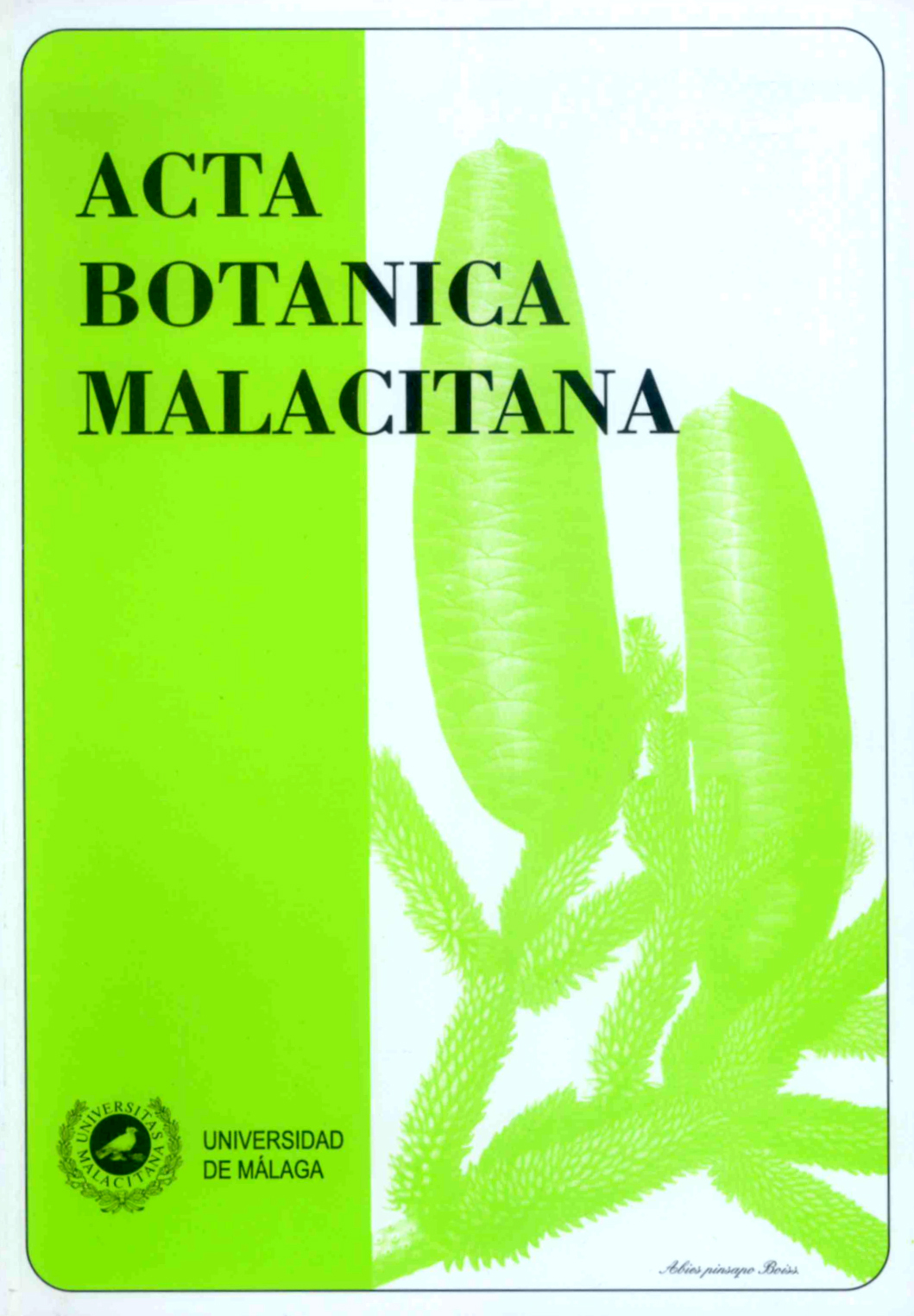Biodiversity of cyanobacteria in industrial effluents.
DOI:
https://doi.org/10.24310/abm.v32i0.7026Abstract
ABSTRACT. Biodiversity of cyanobacteria in industrial effluents. In order to study the biodiversity of cyanobacteria in industrial effluents, four different effluents such as dye, paper mill, pharmaceutical and sugar were selected. The physicochemical characteristics of all the effluents studied were more or less similar. Totally 59 species of cyanobacteria distributed in four different effluents were recorded. Among the effluents, sugar mill recorded the maximum number of species (55) followed by dye (54), paper mill (45) and pharmaceutical (30). Except pharmaceutical effluent, others recorded heterocystous cyanobacteria. In total 26 species of cyanobacteria were recorded in common to all the effluents analysed. Of them, Oscillatoria with 13 species was the dominant genus which was followed by Phormidium (8), Lyngbya (2), Microcystis (2) and Synechococcus with single species. The abundance of cyanobacteria in these effluents was due to favourable contents of oxidizable organic matter, rich calcium and abundant nutrients such as nitrates and phosphates with less dissolved oxygen. Indicator species from each effluent and their immense value for the future pollution abatement programmes have also been discussed.
Key words. Cyanobacteria, Industrial effluents.
RESUMEN. Biodiversidad de cianobacterias en vertidos industriales. Se ha estudiado la biodiversidad de cianobacterias presente en vertidos industriales de diferente naturaleza (colorantes, fabricación de papel, sector farmacéutico y azúcar). Las características físico-químicas de los vertidos fueron más o menos similares. Se han identificado un total de 59 especies de cianobacterias en los cuatro tipos de vertidos. La mayor riqueza específica se encontró en el vertido de la industria azucarera (55 especies), seguida luego por la industria de colorantes, papel y productos farmacéuticos (54, 45 y 30 especies, respectivamente). Con la excepción del vertido de la industria farmacéutica, en los restantes vertidos se detectaron cianobacterias heterocistadas. El número de especies comunes a los cuatro vertidos ascendió a 26. Entre éstas, Oscillatoria, con 13 especies, fue el género dominante, seguido por Phormidium (8), Lyngbya y Microcystis (ambas con 2) y Synechococcus (1). La abundancia de cianobacterias en estos vertidos se debió al contenido en materia orgánica oxidable, altos niveles de calcio y nutrientes inorgánicos (nitratos y fosfatos) y bajos niveles de oxígeno disuelto. Se discuten el valor del indicador de especies de cada vertido y su importancia para los programas de reducción de la contaminación.
Palabras clave. Cianobacterias, vertidos industriales.
Downloads
Metrics
Downloads
Published
How to Cite
Issue
Section
License
All information related to the licensing of published works in Acta Botanica Malacitana and copyright can be found in our Editorial Policy.







1.png)
